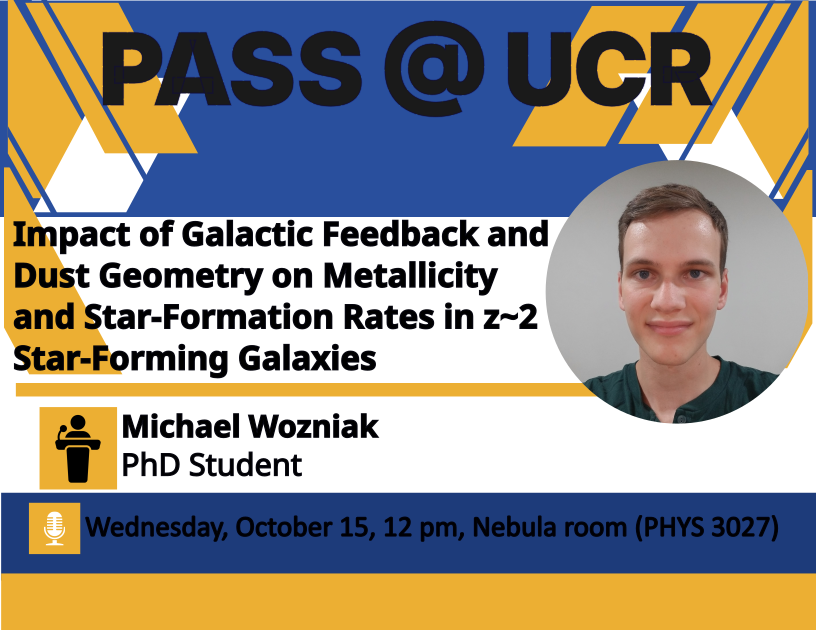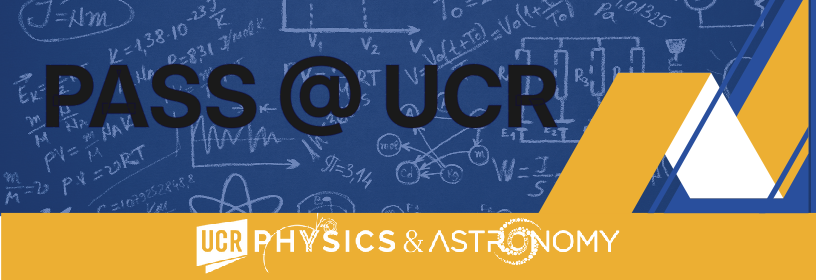
Impact of Galactic Feedback and Dust Geometry on Metallicity and Star-Formation Rates in z~2 Star-Forming Galaxies
Michael Wozniak, PhD Student Wednesday, 12:00 pm, Conference Room (PHYS 3051) Impact of Galactic Feedback and Dust Geometry on Metallicity and Star-Formation Rates in z~2 Star-Forming Galaxies Dust production and baryon cycling are critical components of galaxy evolution. Galaxies accrete cold gas, convert the gas into stars, and eject both dust and metal-rich gas into the interstellar medium. Within this cycle, galactic outflows regulate star formation and redistribute metals, while dust obscuration shapes how we measure star-formation rates (SFRs). ...
